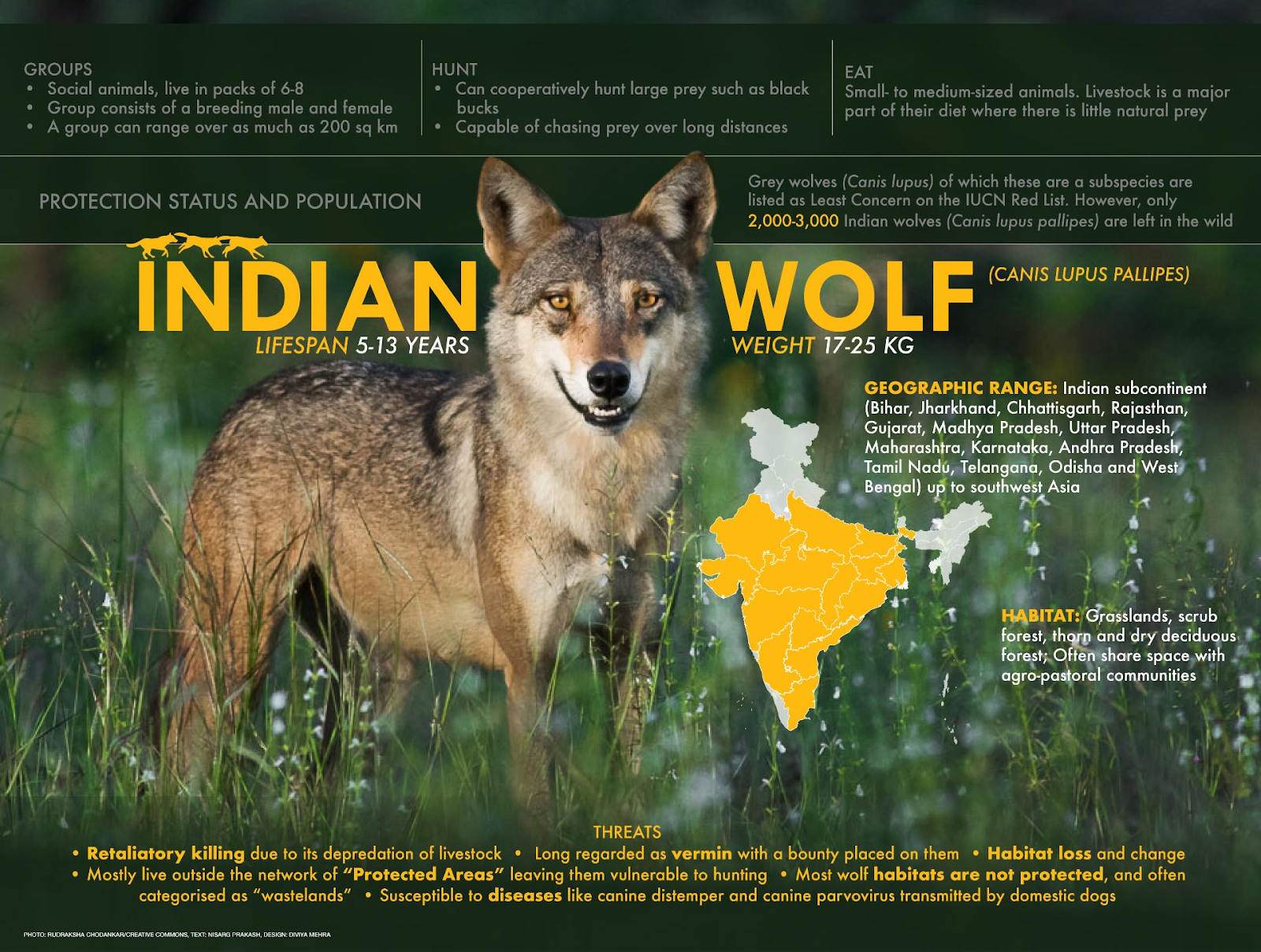Indian Wolf | 22 Oct 2025
The Indian wolf (Canis lupus pallipes), currently found across India and Pakistan, is set to be recognised as a new and distinct species by the International Union for Conservation of Nature (IUCN).
Indian Wolf
- Oldest Lineage: The Indian wolf was earlier grouped under the umbrella genus of the grey wolf (Canis lupus), but genetic studies reveal that the Indian wolf’s lineage diverged, making it the most ancient extant lineage among wolves globally.
- Ecological Niche: Unlike forest-dwelling species, Indian wolves are adapted to arid and semi-arid open habitats such as grasslands and scrublands, often misclassified as “wastelands” in land use policy.
- Conservation Status of Indian Wolf:
- IUCN Red List: Vulnerable (likely to be).
- Schedule I of the Wildlife (Protection) Act, 1972
- Ecological Significance: The Indian wolf inhabits scrublands and grasslands, which also support species like the Great Indian Bustard and Blackbuck. Recognizing it as a distinct species may enhance grassland conservation.
- Major threats include: Habitat destruction from highways and industrial projects, Declining prey base and Habitat fragmentation reducing genetic diversity.
| Read More: Indian Grey Wolf |

